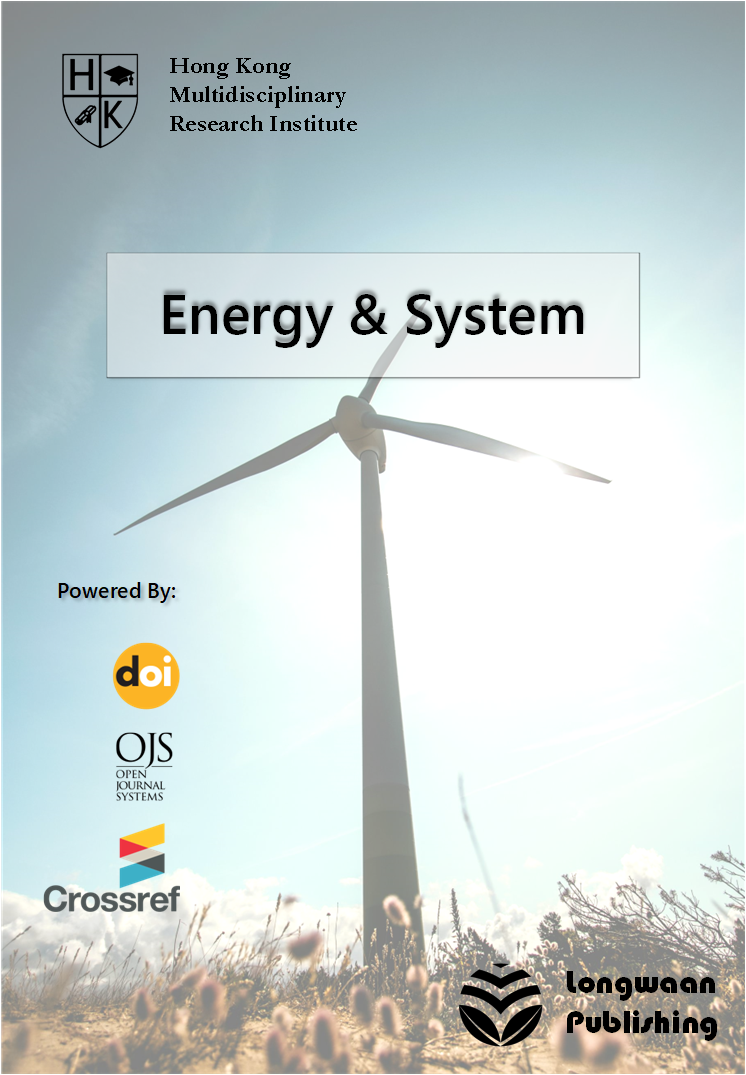Dynamic Thermal Management Systems for Large-Scale Photovoltaic Farms Using Phase-Change Materials
Published 2024-12-21
Keywords
- Phase-Change Materials (PCMs),
- Photovoltaic Farms,
- Thermal Management,
- Energy Efficiency,
- Optimization
- Economic Analysis ...More
How to Cite
Abstract
This study examines the effectiveness of dynamic thermal management systems utilizing phase-change materials (PCMs) in enhancing the performance of large-scale photovoltaic (PV) farms. Focusing on a PV farm in the southwestern United States, which comprises over 10,000 solar panels each rated at 300 Wp, we analyzed a 12-month dataset encompassing ambient temperature, panel surface temperature, solar irradiance, wind speed, and energy output. The research methodology involved characterizing PCMs, developing a thermal model, constructing an experimental prototype, and conducting comprehensive data analysis. Our findings indicate that integrating PCMs reduced the panel surface temperature by approximately 3°C, resulting in a daily energy output increase of 5 kWh and an efficiency improvement of 3.21% to 3.33%. Optimizing the PCM layer thickness revealed that 10 mm strikes the optimal balance between temperature reduction and structural integrity. An economic analysis further demonstrated a positive net present value of $150,000, with a payback period of 5 years, highlighting the cost-effectiveness of the PCM-based thermal management system. This research provides critical insights into the feasibility and efficacy of employing PCMs for thermal management in large-scale PV farms.
References
- Caiqing Mo et al. (2023). Nanoengineering Natural Leather for Dynamic Thermal Management and Electromagnetic Interference Shielding.. Small, e2303368 . https://doi.org/10.1002/smll.202303368
- Na Guo et al. (2023). Dynamic thermal radiation regulation for thermal management. Next Energy. https://doi.org/10.1016/j.nxener.2023.100072
- Qingang Zhang et al. (2023). Deep reinforcement learning towards real-world dynamic thermal management of data centers. Applied Energy. https://doi.org/10.1016/j.apenergy.2022.120561
- Qingxia He et al. (2023). Patterned liquid metal embedded in brush-shaped polymers for dynamic thermal management.. Materials horizons. https://doi.org/10.1039/d3mh01498c
- Jinxin Gu et al. (2022). VO2-Based Infrared Radiation Regulator with Excellent Dynamic Thermal Management Performance.. ACS applied materials & interfaces. https://doi.org/10.1021/acsami.1c17914
- Shailja Pandey, P. Panda (2022). NeuroMap: Efficient Task Mapping of Deep Neural Networks for Dynamic Thermal Management in High-Bandwidth Memory. IEEE Transactions on Computer-Aided Design of Integrated Circuits and Systems, 41, 3602-3613. https://doi.org/10.1109/TCAD.2022.3197698
- Lokesh Siddhu et al. (2022). CoreMemDTM: Integrated Processor Core and 3D Memory Dynamic Thermal Management for Improved Performance. 2022 Design, Automation & Test in Europe Conference & Exhibition (DATE), 1377-1382. https://doi.org/10.23919/DATE54114.2022.9774743
- A. Silva et al. (2022). Reliability Assessment of Many-Core Dynamic Thermal Management. 2022 IEEE International Symposium on Circuits and Systems (ISCAS), 1590-1594. https://doi.org/10.1109/ISCAS48785.2022.9937286
- Shangming Wang et al. (2022). Dynamic thermal management of flashing spray cooling by the frequency conversion of compressor. Applied Thermal Engineering. https://doi.org/10.1016/j.applthermaleng.2022.119322
- Xiaoxia Li et al. (2019). Deep Learning Based Module Defect Analysis for Large-Scale Photovoltaic Farms. IEEE Transactions on Energy Conversion, 34, 520-529. https://doi.org/10.1109/TEC.2018.2873358
- Bartosz Zegardło et al. (2024). Economic and environmental analyses of the construction of on-site, large-scale photovoltaic farms. Economics and Environment. https://doi.org/10.34659/eis.2024.88.1.596
- Xu Tai et al. (2024). Optimal spatial arrangement of modules for large‐scale photovoltaic farms in complex topography. IET Renewable Power Generation. https://doi.org/10.1049/rpg2.13150
- Zhipeng Xi et al. (2018). A Vision-Based Inspection Strategy for Large-Scale Photovoltaic Farms Using an Autonomous UAV. 2018 17th International Symposium on Distributed Computing and Applications for Business Engineering and Science (DCABES), 200-203. https://doi.org/10.1109/DCABES.2018.00059
- Shengjuan Yue et al. (2024). Large-Scale Photovoltaic Farms in the Qinghai Desert: Soil Quality Assessment Methods. Environmental Engineering Science. https://doi.org/10.1089/ees.2023.0290
- N. M. Thao, K. Uchida (2017). A two-level control strategy with fuzzy logic for large-scale photovoltaic farms to support grid frequency regulation. Control Engineering Practice, 59, 77-99. https://doi.org/10.1016/J.CONENGPRAC.2016.11.006
- Yifan Yu et al. (2013). On extending the energy balancing limit of multilevel cascaded H-bridge converters for large-scale photovoltaic farms. 2013 Australasian Universities Power Engineering Conference (AUPEC), 1-6. https://doi.org/10.1109/AUPEC.2013.6725385
- Fengjie Wu et al. (2017). Aerial image recognition and matching for inspection of large-scale photovoltaic farms. 2017 International Smart Cities Conference (ISC2), 1-6. https://doi.org/10.1109/ISC2.2017.8090792
- Jingchao Long et al. (2024). Large-scale photovoltaic solar farms in the Sahara affect solar power generation potential globally. Communications Earth & Environment. https://doi.org/10.1038/s43247-023-01117-5
- A. Sharma et al. (2009). Review on thermal energy storage with phase change materials and applications. Renewable & Sustainable Energy Reviews, 13, 318-345. https://doi.org/10.1016/J.RSER.2007.10.005
- Peng Lian et al. (2023). Thermal performance of novel form-stable disodium hydrogen phosphate dodecahydrate-based composite phase change materials for building thermal energy storage. Advanced Composites and Hybrid Materials, 6, 1-13. https://doi.org/10.1007/s42114-023-00655-y
- M. Zare, K. Mikkonen (2023). Phase Change Materials for Life Science Applications. Advanced Functional Materials, 33. https://doi.org/10.1002/adfm.202213455
- Yongcai Huang et al. (2023). Encapsulation methods for phase change materials – A critical review. International Journal of Heat and Mass Transfer. https://doi.org/10.1016/j.ijheatmasstransfer.2022.123458
- Ge Wang et al. (2023). Phase Change Thermal Storage Materials for Interdisciplinary Applications.. Chemical reviews. https://doi.org/10.1021/acs.chemrev.2c00572
- Z. Luo, H. Yan, and X. Pan, ‘Optimizing Transformer Models for Resource-Constrained Environments: A Study on Model Compression Techniques’, Journal of Computational Methods in Engineering Applications, pp. 1–12, Nov. 2023, doi: 10.62836/jcmea.v3i1.030107.
- H. Yan and D. Shao, ‘Enhancing Transformer Training Efficiency with Dynamic Dropout’, Nov. 05, 2024, arXiv: arXiv:2411.03236. doi: 10.48550/arXiv.2411.03236.
- Y. Liu and J. Wang, ‘AI-Driven Health Advice: Evaluating the Potential of Large Language Models as Health Assistants’, Journal of Computational Methods in Engineering Applications, pp. 1–7, Nov. 2023, doi: 10.62836/jcmea.v3i1.030106.

